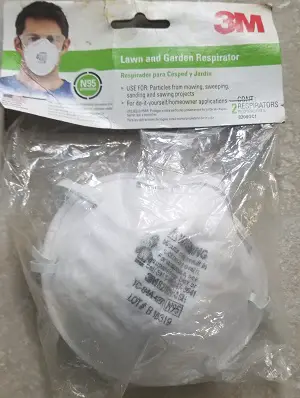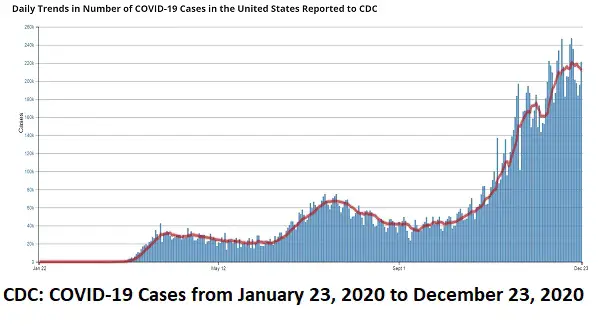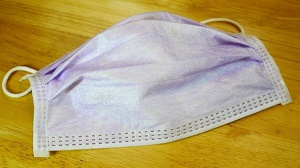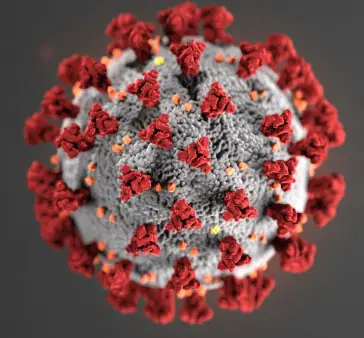 The controversy over wearing masks for the purposes of either preventing the spread of COVID-19 to others, or protecting yourself continues.
The controversy over wearing masks for the purposes of either preventing the spread of COVID-19 to others, or protecting yourself continues.
By now, you have heard about the Coronavirus, that originated in Wuhan, China. In late January, 2020, the World health Organization (WHO), declared Coronavirus as a Global Health Emergency.
Let's take them one by one, WITHOUT POLITICS AND ONLY APPLYING RELIABLE SCIENCE, WITH REFERENCES
Yes, SOME types of masks help reduce exposure, with important caveats:
We'll discuss these issues below.
Yes, if you are contagious, wearing a mask can contain your coughs, sneezes and other respiratory droplets from being projected outwards.
Of course, if you are not contagious, then there's no point in wearing a mask except to put other people, who don't know you aren't contagious, at ease. And how would you know if you are contagious? That is the $64,000 question. At some point in time, we will know how long immunity lasts, and then if you are tested and shown to have the antibodies, there would be no point in wearing a mask. Of course, you could be exposed after you had the test. See this page at the CDC Antibody Testing information.
This is most important part of this discussion. Not all masks are the same. We are focusing on "Air Purifying Respirators", that is masks that filter the air that the wearer breaths. There are also "Supplied Air Respirators" (Like a scuba mask with a tank of air) but those are really relevant here.
N95 respirators and surgical masks (face masks) are examples of personal protective equipment that are used to protect the wearer from airborne particles and from liquid contaminating the face. Centers for Disease Control and Prevention (CDC) National Institute for Occupational Safety and Health (NIOSH) and Occupational Safety and Health Administration (OSHA) also regulate N95 respirators, but obviously not homemade masks and those not bearing the N95 mark or declared to be "non-medical masks".
Denmark, and Norway generally do not recommend wearing face masks. Norway' s Institute for Public Health reported that if masks did work then any difference in infection rates would be small when infection rates are low: assuming 20% asymptomatics and a risk reduction of 40% for wearing masks, 200 000 people would need to wear one to prevent one new infection per week. Ref: https://www.cebm.net/covid-19/masking-lack-of-evidence-with-politics/
December 2020, MSN reports Kentucky Senator Rand Paul (who is a medical doctor) said "no science" is able to corroborate mask mandates across the country, warning Americans that "submission" is the real aim of public health officials. , On Saturday, December 19, 2020, Sen. Rand Paul (R-KY) told Breitbart News:
It' d be one thing if we were told you have to give up your liberty, you have to give up your freedom, we' re going to save your life. But what if you have to give up all your freedoms and they' re wrong on the science?
Every one of the mandates - and you look in country after country, state after state - you look at when the mask mandates went in - the incidents went up exponentially after the mandates. Restaurants, nobody can eat in a restaurant, there' s no science behind any of that.
Middle seat missing on the airplane, you really think you' re like 12 inches from the other guy instead of six inches, it really makes a difference? None of it really makes any sense, and there' s no epidemiological evidence. You know, it' s like, 'Wash your hands, stand six feet apart.'
There' s no evidence that that slowed down the [spread]. � The trajectory of the virus hasn' t been altered at all by any of these things. I think the vaccine will, and this is why I really despise people like the CNN Doctor [Sanjay] Gupta, who I think is committing television malpractice by saying, 'Oh, your mask is a much better thing than the vaccine.' Well, no, it isn' t. The masks aren' t working at all. The thing' s going through the roof and people are dying.
Recent studies (Summer 2021) provide evidence of this:
The CDC says (about wearing Face Masks):
CDC recommends that people wear masks in public settings and when around people who don't live in your household, especially when other social distancing measures are difficult to maintain.
Lancet studies say:
Face mask use could result in a large reduction in risk of infection (n=2647; aOR 0�15, 95% CI 0�07 to 0�34, RD −14�3%, −15�9 to −10�7; low certainty), with stronger associations with N95 or similar respirators compared with disposable surgical masks or similar (eg, reusable 12-16-layer cotton masks; pinteraction=0�090; posterior probability >95%, low certainty)

From November through December 2020, the incidence of COVID-positive individuals has gone through the roof, despite a very high percentage of people wearing masks and distancing. The masks aren't working, social distancing' s not working. The proof is in the numbers. The numbers of new cases are going through the roof. So, all these mask mandates have had no effect on it. The incidence of the virus has gotten worse since we' ve done lockdowns.
American Enterprise Institute: April 21, 2020, says:
Masks are scientifically proven to reduce how many such droplets are spread by infected people. Because many infected people are asymptomatic, it's important that everyone wear a mask. Jogging down the sidewalk? Wear a mask! At a restaurant? Wear a mask! Sitting at your desk at work? Wear a mask! Universal mask-wearing is one of the single best ways to reduce the spread of respiratory disease
We will add that the opinion above does not reflect our opinion. Wearing a mask in circumstances when you are socially distanced from other people outside your family group, particularly outdoors is quite simply pointless. Close to people outside your house, or more especially indoors, that does make sense. Up to a point.
Lancet (the journal of the UK medical society) does not seem convinced that face masks are effective:
In summary, the current best evidence includes the possibility of important relative and absolute benefits of wearing a facemask. Depending on the pandemic situation in a given geographical setting, the desirable consequences of wearing a facemask may or may not outweigh the undesirable consequences.
Let that sink in. 85% of people who reported they wore masks all or most of the time still caught coronavirus. This emphasizes the point above that wearing masks does not protect the wearer from catching COVID-19, but also that it seems to little or nothing to stop the spread of COVID-19.
The AAMC (American Association of Medical Colleges) says:
As COVID-19 infections continue to climb across the United States, scientists, physicians, and public officials are calling on people to wear face masks to help stop the spread of the virus.
But, if face mask wearing was actually effective in stopping, or even slowing, the spread of Coronavirus, that how do you explain the rapid spread in late 2020? Everywhere you look, people are wearing face masks, social distancing and in blue states, there are more restrictions and lockdowns. And yet the transmission rate of COVID-19 INCREASED!
The FDA says "An N95 respirator is a respiratory protective device designed to achieve a very close facial fit and very efficient filtration of airborne particles."
The edges of the N95 respirator are designed to form a seal around the nose and mouth. There should be no gaps. Beards and moustaches in the sealing areas would make the mask ineffective.
The 'N95' designation means that when subjected to careful testing, the respirator blocks at least 95 percent of very small (0.3 micron) test particles. That is smaller than viruses, pollen, most allergens and bacteria. If properly fitted, the filtration capabilities of N95 respirators exceed those of face masks. However, even a properly fitted N95 respirator does not completely eliminate the risk of illness or death.
N95 masks come in 2 main forms, surgical and industrial. Surgical N95 respirators are designed to reduce (but cannot eliminate) airborne biological contaminants. The reduce the risk to the wear of catching a virus, but they do not eliminate it completely.
N95 masks should not be shared or reused. All FDA-cleared N95 respirators are labeled as "single-use," disposable devices.
If your respirator is damaged or soiled, or if breathing becomes difficult, you should remove the respirator, discard it properly, and replace it with a new one.
To safely discard your N95 respirator, place it in a plastic bag and put it in the trash. Wash your hands thoroughly for 20 seconds with soap and water after handling the used respirator.
The CDC has a complete list of approved N95 masks, their manufacturers and proper usage directions.
Typical directions (for model 8200) are shown below:


According to the FDA, a surgical mask is a
loose-fitting, disposable device that creates a physical barrier between the mouth and nose of the wearer and potential contaminants in the immediate environment. Surgical masks are regulated under 21 CFR 878.4040. Surgical masks are not to be shared and may be labeled as surgical, isolation, dental, or medical procedure masks. They may come with or without a face shield. These are often referred to as face masks, although not all face masks are regulated as surgical masks.
Surgical masks are made in different thicknesses and with different ability to protect you from contact with liquids. These properties may also affect how easily you can breathe through the face mask and how well the surgical mask protects you.
If worn properly, a surgical mask is meant to help block large-particle droplets, splashes, sprays, or splatter that may contain germs (viruses and bacteria), keeping it from reaching your mouth and nose. Surgical masks may also help reduce exposure of your saliva and respiratory secretions to others.
While a surgical mask may be effective in blocking splashes and large-particle droplets, a face mask, by design, does not filter or block very small particles in the air that may be transmitted by coughs, sneezes, or certain medical procedures. Surgical masks also do not provide complete protection from germs and other contaminants because of the loose fit between the surface of the face mask and your face.
Surgical masks are not intended to be used more than once. If your mask is damaged or soiled, or if breathing through the mask becomes difficult, you should remove the face mask, discard it safely, and replace it with a new one. To safely discard your mask, place it in a plastic bag and put it in the trash. Wash your hands after handling the used mask.
Note that the edges of the mask are not designed to form a seal around the nose and mouth - they do NOT stop viruses.
"Right now, people in the U.S. should not be walking around with a mask... It might make people feel better and it might even block a droplet, but it does not provide the perfect of protection that people think".He has subsequently added that he now wants people to wear "some form of covering" to reduce the spread."
Here's what you need to know about it, the latest news, and how to protect yourself and your family.

It appears that this virus is airborne, being spread but droplets from a respiratory tract, such as sneezes, coughs, mucus, saliva, etc. Touching the droplets and then rubbing your eyes, face, mouth, etc. is the most likely form of infection. The droplets containing the virus could be left on surfaces like doorknobs, tables, cellphones, etc. Or being close to an infected person (6 - 8 ft) could also result in infection. .
Note: the World Health Organization says "people receiving packages from China are not at risk of contracting the new coronavirus. From previous analysis, we know coronaviruses do not survive long on objects, such as letters or packages."
This is a rapidly evolving situation and the CDC's risk assessment is also changing rapidly. The latest updates are available on CDC's 2019 Novel Coronavirus website.
There are very, very few people in the U.S currently showing infection (3 or 4, in the whole United States). See the current U.S. case count of infection with 2019-nCoV. At present, the risk for those in the U.S. is very low. By comparison, each year there are about 12,000 to 61,000 deaths annually in the U.S. caused by the flu.
According to The Atlantic, last week, (3rd week in February 2020), "14 Americans tested positive on a cruise ship in Japan despite feeling fine - the new virus may be most dangerous because, it seems, it may sometimes cause no symptoms at all."
See this page for prevention and treatment information for Coronavirus.
Ways to save money AND help the environment:
Eat healthier AND save money: Instant Pot Duo Crisp 11-in-1 Air Fryer and Electric Pressure Cooker Combo with Multicooker Lids that Fries, Steams, Slow Cooks, Sautés, Dehydrates
Save water AND money with this showerhead adapter, it lets the water flow until the water is hot, then shuts off water flow until you restart it, ShowerStart TSV Hot Water Standby Adapter
Protect your health with these:
Mattress Dust mite-Bedbug protector, 100% Waterproof, Hypoallergenic, Zippered
Handheld Allergen Vacuum Cleaner with UV Sanitizing and Heating for Allergies and Pet, Kills Mite, Virus, Molds, True HEPA with Powerful Suction removes Hair, Dander, Pollen, Dust,
Immune Support Supplement with Quercetin, Vitamin C, Zinc, Vitamin D3
GermGuardian Air Purifier with UV-C Light and HEPA 13 Filter, Removes 99.97% of Pollutants
5 Stage Air Purifier, Features Ultraviolet Light (UVC), H13 True Hepa, Carbon, PCO, Smart Wifi, Auto Mode, Quiet, Removes 99.97% of Particles, Smoke, Mold, Pet Dander, Dust, Odors
Interesting Reads:
THE PREPPER'S CANNING & PRESERVING BIBLE: [13 in 1] Your Path to Food Self-Sufficiency. Canning, Dehydrating, Fermenting, Pickling & More, Plus The Food Preservation Calendar for a Sustainable Pantry
The Backyard Homestead: Produce all the food you need on just a quarter acre! Paperback
The Citizens' Guide to Geologic Hazards: A Guide to Understanding Geologic Hazards Including Asbestos, Radon, Swelling Soils, Earthquakes, Volcanoes
The Uninhabitable Earth: Life After Warming
Book: The Sixth Extinction: An Unnatural History Paperback